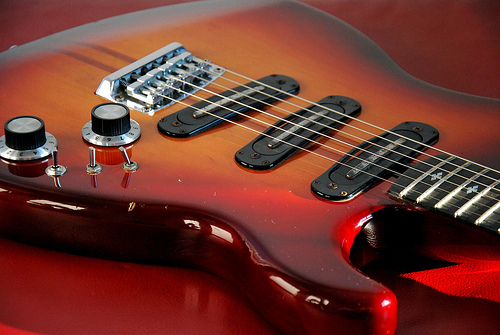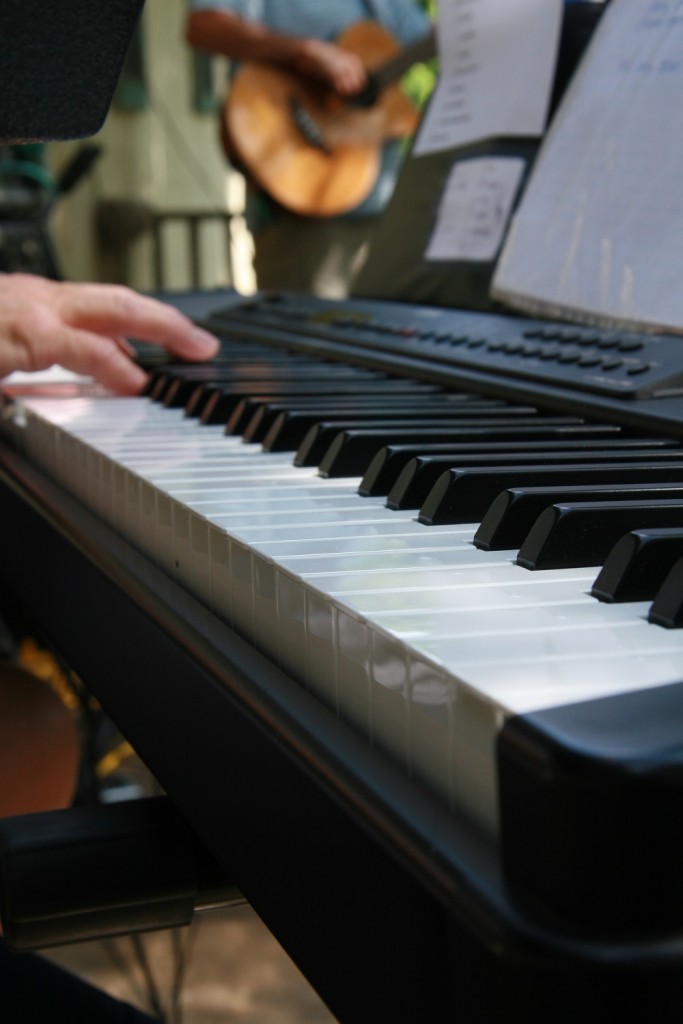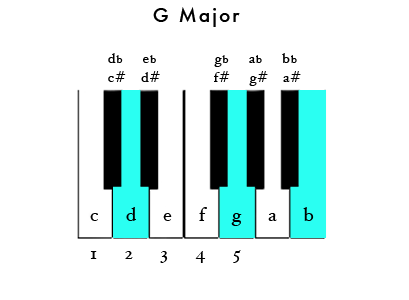
Chords are the bread and butter of learning to play an instrument. But are the chords transferable from one instrument to another? If you know how to play specific chords on the piano, can you automatically know how to play them on the guitar?
Here’s a look at the similarities and differences between guitar and piano chords.

The Same, Yet Different
The short answer to the above question of “Are guitar chords to same as piano chords” is a very political answer of “Yes, but no”. This slightly confusing answer is down to the fact that although the specific notes to form a specific chord are the same for piano and guitar, the position of how you play them differs.
More importantly, there are slight differences in the tone colour of the sound depending on which instrument you are playing with. This means that you can’t always directly transfer the piano chords for the guitar.
A Few Example Chords
The slight differences are perhaps easiest explained through a few examples. With the following examples, it’s easier to see the similarity in notes, but the difference in the note order, for example.
Let’s take the Major G chord as the first example:
On the guitar the chord is formed by playing the following notes:
G B D G B G
The finger position on the guitar would look like this:
G D G B D G
Fret 1
Fret 2 2
Fret 3 3 4
Fret 4
Fret 5
The above means that you are pressing down the G note on the third fret with your middle finger, the note D on the second fret with your index finger and the note G on the third fret (the bottom string) with your ring finger. The other notes are played as open notes.
On the other hand, the same chord is formed on the piano by playing the notes:
G B D
You can see the finger position on the piano from the below image:

Furthermore, the chord G major 9 (gmaj9) is another great example of the differences between the chord structures. The ninth chord of the G major would have five notes. But naturally, the guitar can only play four different notes at any time.
Therefore the chord on the guitar play be played by using notes:
G B F A
On the other hand, the piano gives you access to a number of notes. The ninth G major chord would be played like this:
G B D F A
Voicing Differences
To conclude, chords are essentially the same whether you are playing them on the guitar or the piano. What is different is the voicing of these chords. As the above examples show, you often have a more limited ability to play a specific chord on the guitar, which can make slight changes to the amount of notes you play with any given chord.
Because of the limitation on string numbers, guitar chords don’t always play the notes at the same time. These so-called open notes or arpeggios, are three or more notes which you don’t play simultaneously, yet are played close enough to each other to be considered as a chord. The difference to the same piano chord would be that the piano plays all the notes simultaneously.
If you are learning to play the guitar or the piano, then it will help a lot to know the chords in the other instrument. The slight differences will be quick to learn and you can often translate chords from one instrument to the other with minor tweaks.
Are you a guitarist? Check out our full range of online guitar lessonsAre you a saxophonist? Check out our full range of online saxophone lessons
Subscribe to Pro Music Tutor from as little as £7.99 per month
Related Posts
-
The Benefits of Online Music Education
Learning music has never been easier, since the internet and modern technological advancements have opened the doors to countless possibilities, expanding the subjects people can choose from and how the lessons are taught. Now, people can study a whole host of music-related topics; from learning to play guitar or DJing, to understanding the inner workings […]
View All >> -
Essential Jazz Guitar Scales that are Easy to Learn
Improvising in jazz requires the ability to play in different keys over different chords. Results certainly do not come overnight, but with diligent practice, you would be surprised by what you can achieve. Many people ask me about what scales I use as if they were some big secret. While knowing your scales is very […]
View All >>
Latest Blog Entries
-
The Benefits of Online Music Education
Learning music has never been easier, since the internet and modern technological advancements have opened the doors to countless possibilities, expanding the subjects people can choose from and how the lessons are taught. Now, people can study a whole host of music-related topics; from learning to play guitar or DJing, to understanding the inner workings […]
View All >> -
Essential Jazz Guitar Scales that are Easy to Learn
Improvising in jazz requires the ability to play in different keys over different chords. Results certainly do not come overnight, but with diligent practice, you would be surprised by what you can achieve. Many people ask me about what scales I use as if they were some big secret. While knowing your scales is very […]
View All >>
Blog Categories
- Categories
- Guitar Tips (93)
- History (36)
- How-To (38)
- Interviews (3)
- Music Industry (121)
- Prolinks Guitar (2)
- Prolinks Lessons (3)
- Prolinks Tutor's Profile (1)
- Saxophone Tips (40)
- Uncategorized (6)
Tags
Archive
- November 2018 (1)
- February 2018 (1)
- December 2017 (1)
- November 2017 (1)
- October 2017 (1)
- July 2017 (4)
- May 2017 (2)
- April 2017 (1)
- August 2016 (2)
- July 2016 (1)
- June 2016 (2)
- May 2016 (3)

